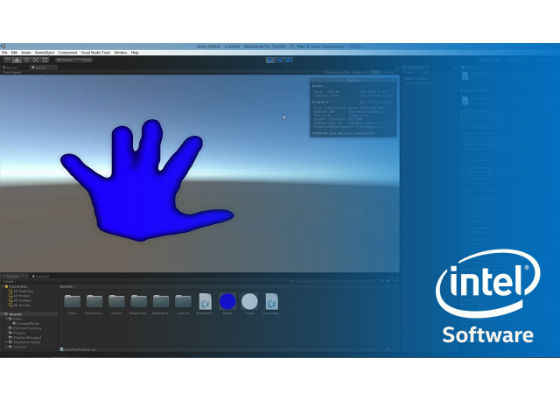Intel RealSense Technology + Unity 5 – Pro Tips

Jacob Pennock from Livid Interactive imparts some valuable advice on working with Intel® RealSense™ technology and Unity* 5 in this series of seven videos. See below for a description of each video.
Note: In some of the videos, Jacob references a video that describes the SDK’s emotion module. That video is no longer available because the emotion module has been deprecated, and starting in the Intel® RealSense™ SDK R5, it has been removed.
How to Set Up the Intel® RealSense™ SDK Toolkit in Unity* 5
Jacob describes how to import the Intel RealSense SDK Toolkit into Unity 5 and test your installation with a gesture-based drag-and-stretch code sample from the Intel RealSense SDK. Note: if you’ve installed version R4 or above of the Intel RealSense SDK, you can disregard the instructions to swap out 32-bit toolkit binaries and replace with 64-bit binaries, because starting with R4, the toolkit ships with 64-bit binaries built for Unity 5.
Optimizations for the Intel® RealSense™ SDK Toolkit – Part 1
In this two-part video on optimizations, Jacob highlights aspects of the Intel RealSense Toolkit where performance is not adequate for a production application. In Part 1 he describes how to significantly improve frame rate performance with a change to SenseToolkitMgr.Update(). He also shows how to fix a mirroring problem with one of the toolkit samples.
Optimizations for the Intel® RealSense™ SDK Toolkit- Part 2
In Part 2, Jacob demonstrates how to fix a performance problem with toolkit methodDrawImages.Update(). In the video he creates a new, more memory-efficient method to replace an Intel private method that has a large memory footprint.
How to Use the Intel® RealSense™ SDK in Unity* 5 Directly (without the toolkit)
In this video Jacob details how to access the Intel RealSense SDK directly from inside your Unity 5 C# code. The Intel RealSense Toolkit can be useful for quick testing, but developers will get better results for most applications by building customized interactions with the Intel RealSense SDK. He goes over the basic steps required to create customized interactions.
Intel® RealSense™ SDK + Unity* 5 Pro Tip: Monitor the Frame Rate
Jacob has learned over the past 2 years of working with Intel RealSense technology that it is helpful to measure the frame rate at which RealSense is returning data. In this video he goes over one way to accomplish this.
Alternative Hand Tracking Modes with the Intel® RealSense™ SDK and Unity* 5
The Intel RealSense SDK includes a couple of skeletal hand tracking examples. In this video Jacob demonstrates another hand tracking technique using the Extremities mode and the segmentation image it produces. This is much faster than using skeletal hand tracking.
Intel® RealSense™ SDK + Unity* 5 Pro Tip: Displaying Segmentation Images
Here Jacob takes the low-resolution hand segmentation images he created in the previous video and scales them up in size to something that is presentable to the user without looking pixelated.
Intel® RealSense™ SDK + Unity*: 5 Pro Tip: Update in a Separate Thread
Jacob describes his new Asus laptop with an embedded Intel® RealSense™ camera, and demonstrates how to improve performance of your application by using a separate thread for most Intel RealSense SDK interactions.
About the Author
Jacob Pennock is an Intel® RealSense™ expert from the Bay Area. He is Senior Creative Developer, Helios Interactive Technologies & Chief Game Designer / Lead Developer, Livid Interactive.
For more such intel resources and tools from Intel on Game, please visit the Intel® Game Developer Zone
Source: https://software.intel.com/en-us/realsense-and-unity-5-pro-tips




